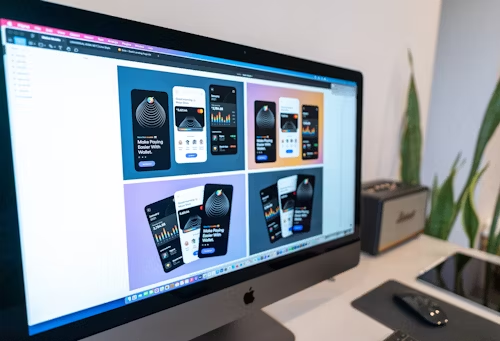Graphics Design Best Practices for Small Businesses

In the digital age, effective graphics design is crucial for small businesses looking to establish a strong presence and connect with their target audience. With limited resources, small businesses must leverage graphics design best practices to create impactful branding and marketing materials that stand out. At Mountain Techo System, we explore essential graphics design strategies that small businesses can adopt to enhance their visual communication and drive growth.
Graphics design is an essential element of marketing and branding for small businesses. By following best practices, small enterprises can create professional-looking designs that resonate with their audience. Here are some key graphics design best practices for small businesses:
- Define Your Brand Identity
- Establish a clear brand identity, including your mission, values, and target audience. This foundation will guide your design choices and ensure consistency across all visual elements.
- Create a Cohesive Visual Style
- Use a consistent color palette, typography, and imagery style across all materials. This cohesive approach strengthens brand recognition and builds trust with customers.
- Invest in Quality Design Tools
- Utilize professional design software or online tools to create high-quality graphics. Investing in the right tools can significantly improve the quality of your designs and save time in the long run.
- Keep It Simple
- Embrace simplicity in your designs. Avoid clutter and unnecessary elements to create clean, easily digestible visuals that effectively communicate your message.
- Focus on User Experience (UX)
- Prioritize user experience in your designs, especially for websites and digital materials. Ensure that your graphics are visually appealing and facilitate easy navigation and interaction.
- Utilize High-Quality Images
- Invest in high-quality images and graphics that align with your brand. Avoid using low-resolution or generic stock photos, as they can undermine your brand’s professionalism.
- Incorporate Your Logo Effectively
- Make sure your logo is prominently featured in your designs. Consistent placement helps reinforce brand identity and ensures that your audience recognizes your brand.
- Test Different Designs
- A/B testing can help you determine which graphics resonate most with your audience. Experiment with different styles, colors, and layouts to find what works best.
- Leverage Social Media Graphics
- Create engaging graphics for your social media platforms. Eye-catching visuals can boost engagement and shareability, helping to increase your brand’s visibility.
- Seek Feedback and Iterate
- Collect feedback from customers and peers on your designs. Use this input to refine and improve your graphics, ensuring they align with your audience’s preferences.
Conclusion:
By implementing these graphics design best practices, small businesses can create compelling visual content that captures attention, conveys their brand message, and fosters customer loyalty. A well-designed brand identity can lead to increased visibility and growth in a competitive marketplace.














